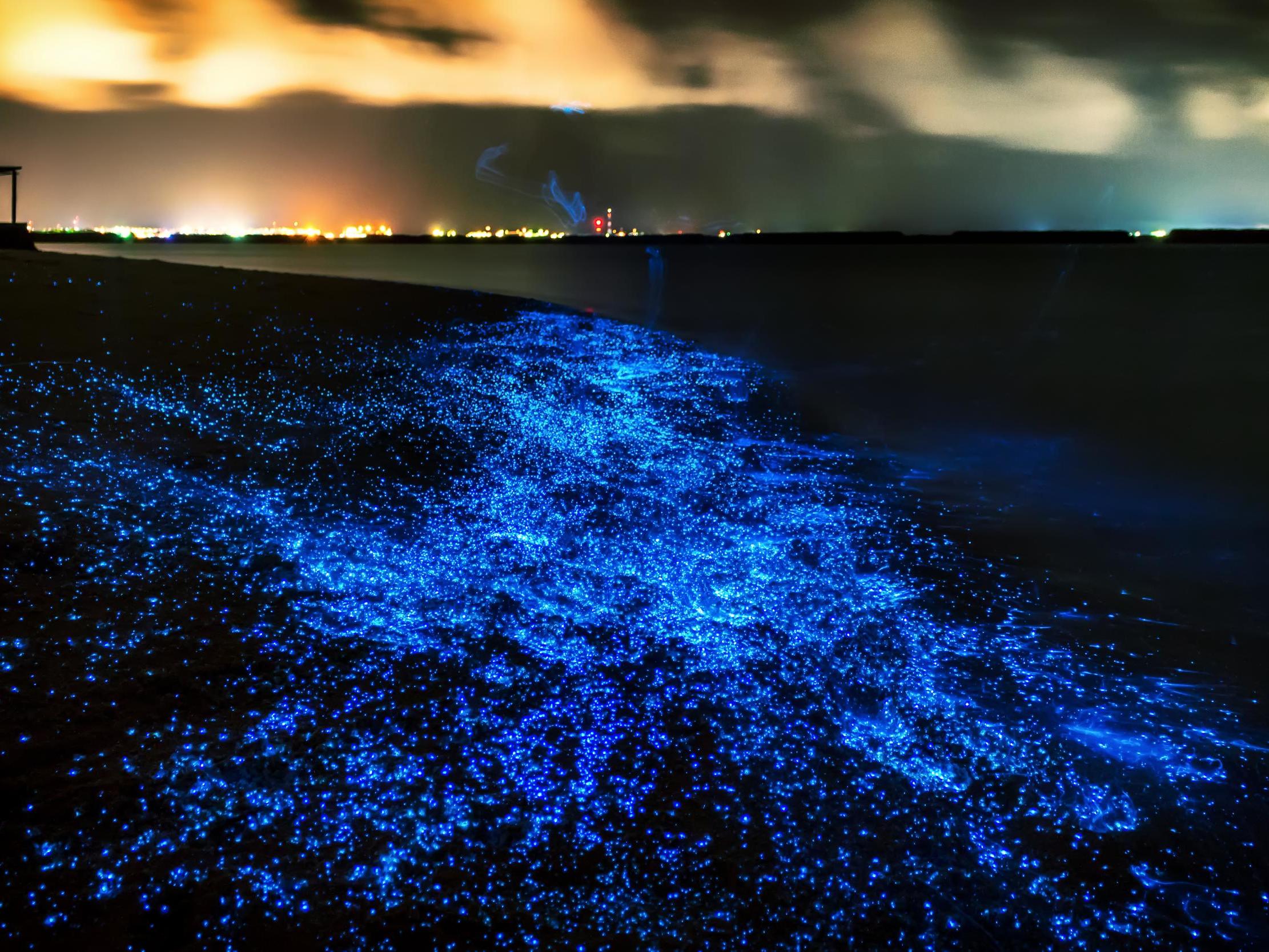This website uses cookies so that we can provide you with the best user experience possible. Cookie information is stored in your browser and performs functions such as recognising you when you return to our website and helping our team to understand which sections of the website you find most interesting and useful.

A mesmerising neon light show has been glowing along the shores of Southern California.
The phenomenon is caused by colonies of algae, simple plants that live in water, which bloomed in March along a stretch of coastline from Baja to Los Angeles.
During the day millions of algae, called dinoflagellates, appear as a reddish-brown colour on the ocean’s surface known as a “red tide“ and give off an unpleasant, sulphur-like odour as it decays.
"Red tides” pop up all over the world but not all provide dazzling neon displays when night falls.
When the mass of dinoflagellates are mixed up by waves or larger ocean life, a chemical reaction involving enzyme luciferase and compound luciferin produced by the algae is what causes bioluminescence, the creation of light by a living organism.
The spectacle has drawn awed visitors to beaches to watch the lights.
Some red tides produce dangerous toxins which can be deadly to mammals and fish but the California algal blooms are not poisonous, instead acting as a food source.
Harmful algal blooms (HABs) occur when algae grow out of control and scientists suggest that they are increasing in number along coastlines. Not only can they cause harm to marine life but, in rare cases, can affect human health, according to the National Oceanic and Atmospheric Administration (NOAA).
Although HABs occur along every state’s coastline, perhaps the best known “red tide” appears almost every summer along Florida’s Gulf Coast. NOAA monitors the phenomenon in the hopes of giving communities better predictions of when a “red tide” might appear.



 Africana55 Radio
Africana55 Radio 

